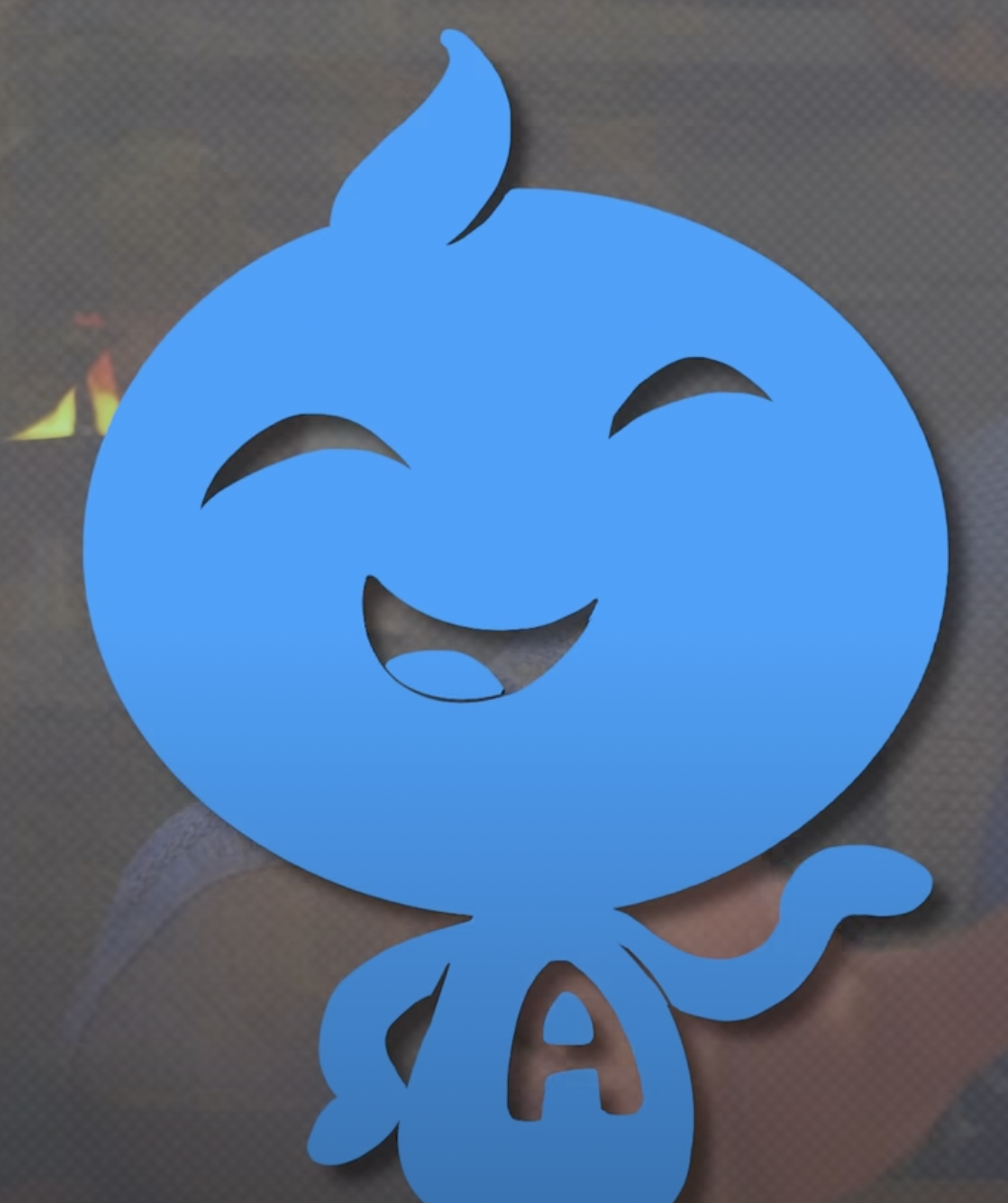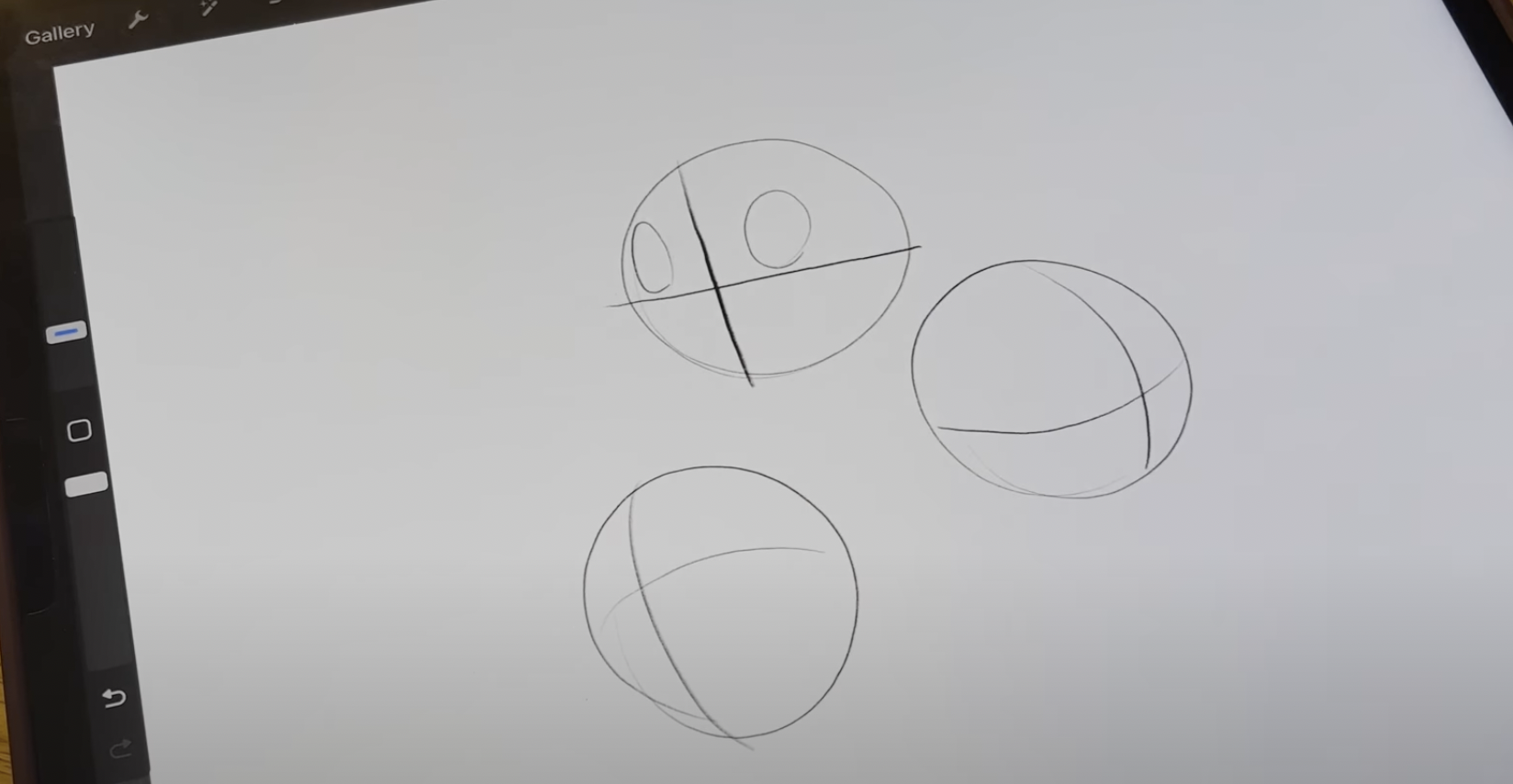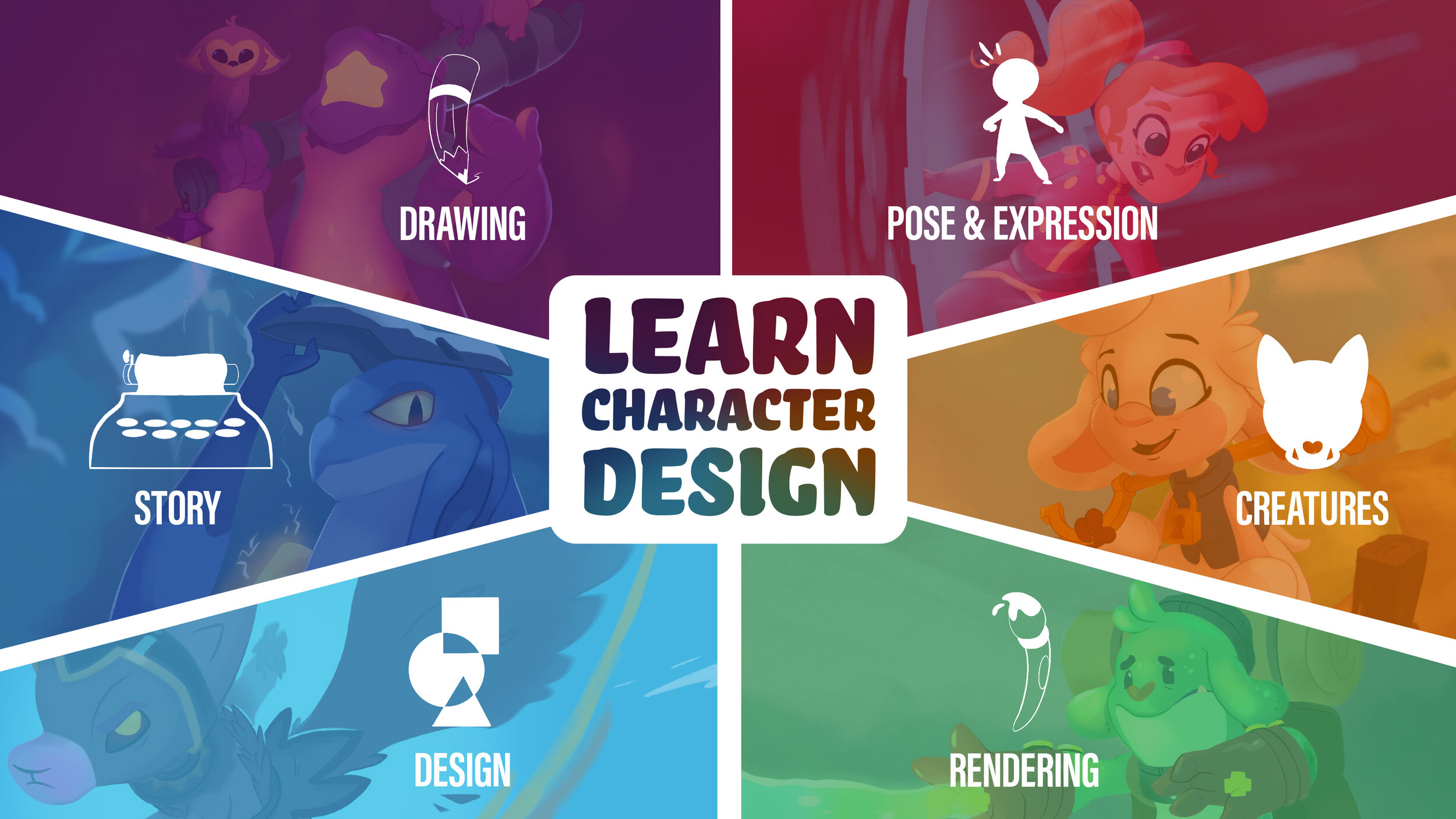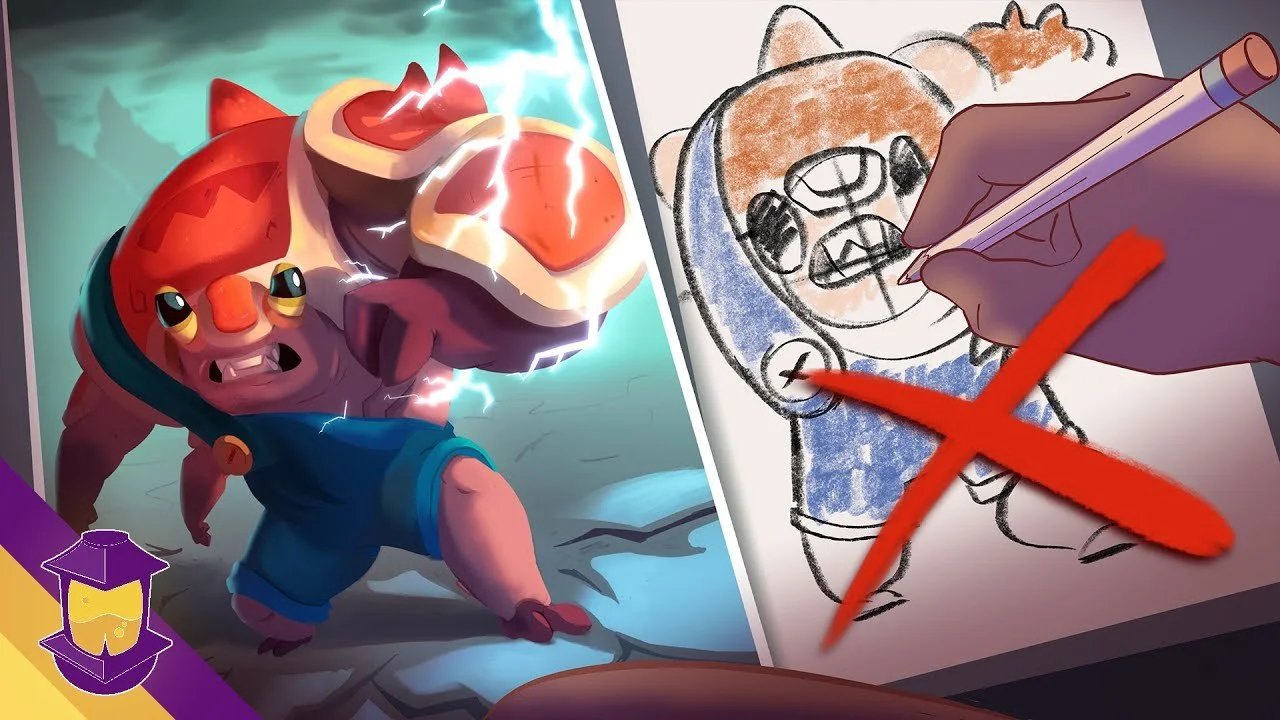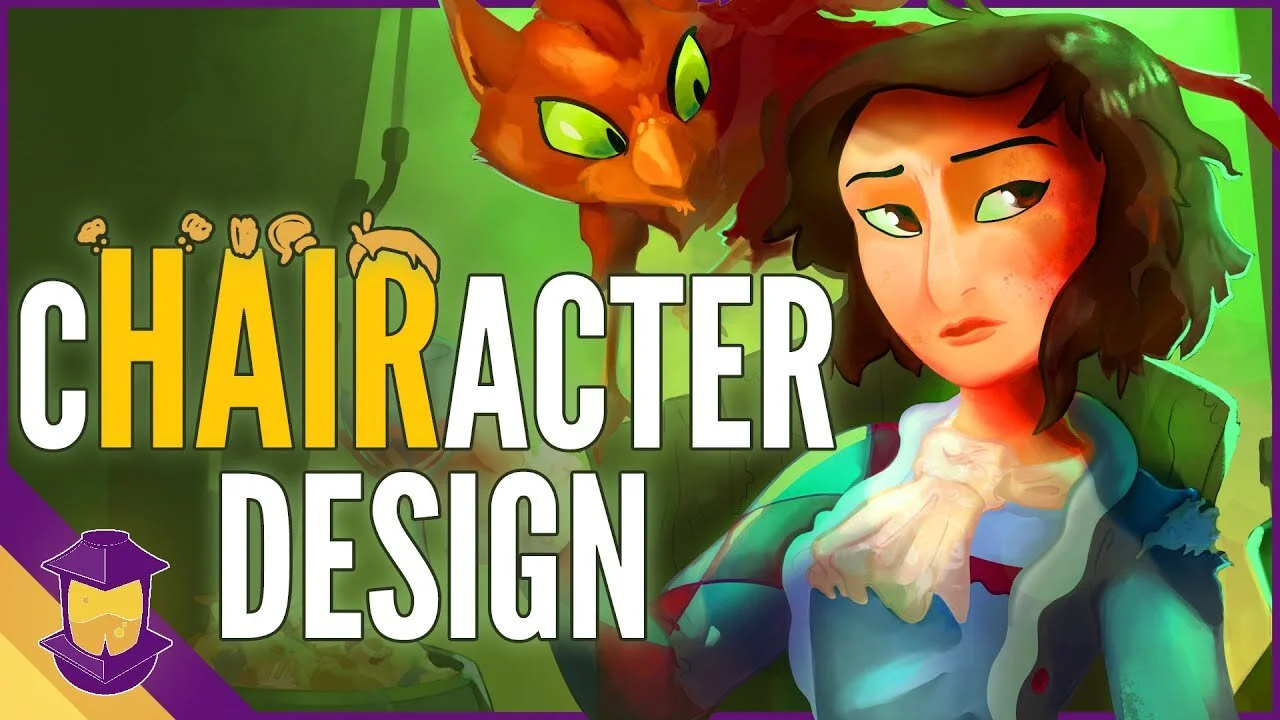Have you heard anyone say “Draw what you see, not what you think you see?”
Well, this advice confused me when I was younger, but now, after working with hundreds of students, I feel like it’s some of the best advice you can get.
In this video, I’d like to make it make sense. And once you have a grasp on it, it’ll speed up your learning significantly.
Watch this video now!
Part Observing, Part Communicating
Now most people hear this advice and go yeah, yeah, [shush]
This sounds simple, and maybe even confusing, but there’s actually a ton being said in such a brief statement.
Part of this is because drawing is one part observing, what YOU see, and one part communicating, what other people are going to see.
Think about this in terms of having a conversation with someone else. Maybe hypothetically, this is two people that have a strained relationship, where neither of them seems to see eye-to-eye. Aw, that kinda makes it sad.
You could have two people making very standard statements, like:
“Hey, how’re you doing?”
And:
“I’m alright” —now that that’s over.
If you’re just reading back the transcript, it feels like there’s something missing. That’s because, in person, you could see that Person B is covered in mud and bug bites. The thing that’s over now is: them being chased through a swamp. But at two points, this communication could break down, as it often does.
Person A could fail to notice the state Person B is in, and take them at their word that they’re “alright”.
Or, Person B could fail to make it clear enough how they’re doing. Y’know, like when we’re doing Fine. Im doing fine. Can’t you tell how FINE—
A’hem. Back to the point.
in a less, swampy environment, without as many props, it takes insight and experience for Person A to understand how someone else is feeling and how to empathize with them.
And if Person B isn’t feeling heard, there’s a 50/50 chance that they aren’t being clear enough, or don’t know how to articulate what they feel. Maybe it’s a deep, new, or complicated feeling that’s hard to put into words, or hard to say the right way without hurting the other person’s feelings.
So, going back to drawing, This is exactly what’s happening in a lot of student work.
Sometimes an artist simply doesn’t know how to represent something properly, their tools for communicating just aren’t strong enough. But in other cases? It’s actually them being dismissively over-simplistic about what they’re drawing. Or, using symbols that they think everyone understands, instead of accurately representing something.
You get what I mean, right? Right? Well if you don’t get what I mean, that’s because I’m just saying, “you get what I mean” prematurely, in lieu of actually helping you understand something.
I’ve talked about the pitfalls of drawing abstract symbols instead of the thing you actually see before, referring to this as “cartoons of cartoons.”— symbols based on symbols, instead of symbols based on the real thing.
(Psst! Watch my video STOP Making Cartoons of Cartoons here!)
If your only point of reference for a rabbit character was Bugs Bunny, you would probably end up creating an odd perversion of a creature with long limbs and gloves.
But you would also be copying the linework of a Bugs Bunny drawing from a superficial, surface level. Which gets noticeable REALLY, really fast.
Thinking of this in terms of our conversation, this is like an alien or say, an insultingly stupid computer program, like I dont know, an AI, that’s sludged together things people have written on the internet without any sentient thinking ability of it’s own- observing real people communicating.
You’d end up with a lot of, “Mondays, amirite?” And “Live, Laugh, Love”- things that, are said by people, and sound a lot like people talking, but likely lacking coherent, meaningful communication.
So maybe you aren’t drawing an entirely new rabbit character solely based on Bugs, because you’ve seen a real rabbit. But more commonly, this happens with pieces like: Hands. Limbs. Eyes. Faces.
Draw What You See, Not What You Think You See.
Observing and Communicating— and like, actually doing both.
What is it in conversation, that’s like observing with our ears? Oh yeah, *listening*.
It takes insight to listen to someone talk, understand what they’re saying, empathize with them, and then turn around and say, “So if I’m hearing you right…” followed by your correct interpretation of what they said in your own words. It takes practice and experience to get there.
To draw what you see, we are removing the layers of assumptions, dismissive summaries, and quick fixes of what we’re drawing, and observing as insightfully as we can.
In a way, we are humbling ourselves in our drawing, and not making our assertions and inferences more important than the truth.
The “Circle with Two Lines on it” Conundrum
I can remember starting out, and seeing how a lot of artists would start their heads with a circle and two lines on it. I understood why they did this— it was to find the center of the head. And the head is a sphere anyway, right?
I would draw characters this way, and ultimately, they wouldn’t look right- mainly because, what I thought I saw—not in the subject matter, but in someone else’s process— was only part of their process. And while I was seeing the marks they were making, I wasn’t seeing the thoughts and experience they already had.
A lot of times, this was just some mark-making on the page to help place things they already understood. A head is not only spherical, it has a jaw, it has flat planes like on the side of the head. Those features aren’t flatly placed on the surface of the face, but recessed or protruding.
Eventually, I learned the right way to draw a head through study and can condense some of those shapes down into something almost spherical if I need to, because I know that jaw still has to exist.
And now, it’s really easy for me to notice when students are trying to condense all the features of the head onto a sphere. It’s claustrophobic and doesn’t make sense.
But they’re drawing what they think they see. A brief summary of half-understood processes, and perhaps no one to interject feedback to the contrary.
This can be done practically—not by doing a surface-level study of a subject matter— but by exploring it in multiple ways.
Figuring out the simple 3 dimensional constructed shapes it makes- finding through lines in gesture, drawing from different angles, poses, and expressions, downloading the subject matter into your mental library.
You want to understand a subject before you start stylizing it. Before you start putting it in your own words.
Here’s 3 really nitty gritty ways to check if you’re applying this (especially as you draw from a subject matter, or even do a master study of someone else’s work):
Size. As in the length or proportion of something. A lot of times you can measure by using a portion of your drawing tool, as long as you keep the scale consistent.
2. Angles. do you have the degree of an angle down well, are the two sides of the angle going off in the right direction?
3. Curves. You might have the curve copied, but curves can be complicated. Is the apex of the curve, or the furthest point of it, hitting in the right place? Because as you can see here, just because a curve starts and ends at the right places, doesn’t mean it’s going to be accurate.
(Struggling to refine your design skills? Check out Module 3: Design from the Learn Character Design course. In this module we break down the concepts of design, how to practically create characters using these principles, and create several thesis characters based on various styles of character design through history.)
When a baby starts making baby sounds it’s them trying to imitate what they think you’re doing when they hear people talking. They don’t know why they’re doing it, they’re just copying the surface-level elements of it.
Contrast that with Writers, poets, rappers, all people that didn’t just browse a dictionary, finish 3rd-grade grammar classes, and start pumping out great examples of language. They have a level of mastery over and deep understanding of the spoken or written word, and the way they wield it is elegant, clever, and profound.
Experienced artists do the same thing when they create stylized, different takes on shapes and ideas. They create elegant ways of expressing something through shape, color, and line- but they didn’t get there by STARTING with stylization, or solely copying the way that someone else stylized things- they learned to draw what they see.
Then and only then, they’re able to COMMUNICATE what they see to others, in a way that’s not only passably understandable but resonates.
Don’t Rush Your Process
The unfortunate thing is, that a lot of newer artists are rushing to make something final or official like a story or project, but it’s noticeable, especially to artists more experienced than them, that they aren’t ready yet. Because of a lot of skipped steps.
I can’t emphasize this enough: the practice you do on these observed things will trickle down into even the most stylized, exaggerated, cartoony work you end up doing.
Guys. Seriously. Don’t take the shortcut. Really listen- with your eyes.
The whole first module of the Learn Character Design Course is on Drawing, if you want some help really shoring up those fundamentals.y
You can support our Youtube channel by grabbing Biko’s Backpack over on Patreon, which, for the month of March, looks like this:
And you can of course get personalized critique videos on Patreon at the Novice Bard tier as well.
And HEY! Maybe see you at Big Apple Comic Con this weekend! In the meantime, have fun creating!
Do you Want to Master your Digital Art and Character Design Skills?
Take the online course that has helped countless students master basic and advanced character design techniques.
Welcome to the Forge!
If you’re new here, get to know our mission here at Character Design Forge and start designing your best characters yet.


